A place to learn and grow
A Place to Learn and Grow
A Place to Learn and Grow - Care.com Canton, OHCostimate™
$159
per week
Ratings (2)
★★★★★
★★★★★
★★★★★
★★★★★
Availability
Costimate™$159/week
Ratings (2)
★★★★★
★★★★★
★★★★★
★★★★★
Availability
At Care.com, we realize that cost of care is a big consideration for families. That's why we are offering an estimate which is based on an average of known rates charged by similar businesses in the area. For actual rates, contact the business directly.
Details and information displayed here were provided by this business and may not reflect its current status. We strongly encourage you to perform your own research when selecting a care provider.
Discounts for siblings.
We are a 5-star step up to quality program, with degree lead teachers in each classroom. We open Monday through Friday from 6AM to 10PM.
In business since: 1995
Total Employees: 11-50
Awards & Accreditations
5-star rated step up to quality by the department of education.
State license status: CONTINUOUS LICENSE (Care.com verified on 10/17/2022)
This business has satisfied Ohio's requirements to be licensed. For the most up-to-date status and inspection reports, please view this provider's profile on Ohio's licensing website.
Licensing requirements typically include:
- Complying with safety and health inspections
- Achieving the required levels of educational training
- Maintaining a minimum caregiver-to-child ratio
- Other state-defined requirements
Type
Child Care Center/Day Care Center
Preschool (or Nursery School or Pre-K)
Additional Details
Emergency backup care
Summer care / camp
Philosophy
Developmental (Play-Based)
Academic
International
Outdoor/Nature
Languages
English
Spanish
Mandarin (Chinese)
Teacher/Student Ratio:
differs from classroom to classroom
Program Capacity:
100
OFFERINGS
Full Time (5 days/wk)
Part Time (1-4 days/wk)
Full-Day
Extended Care (Before School)
Extended Care (After School)
PAYMENT OPTIONS
- Personal Check|
- Cash|
- Credit Card
05/05/2022
Terrible place for babies and children who can't speak of for themselves . If I could I would rate this place a 0.
04/04/2020
The Ratingis a 3. Licensing issues are horrendous. Please review the non-compliance actions of the center and staff. Beware of false advertising as a higher rated center.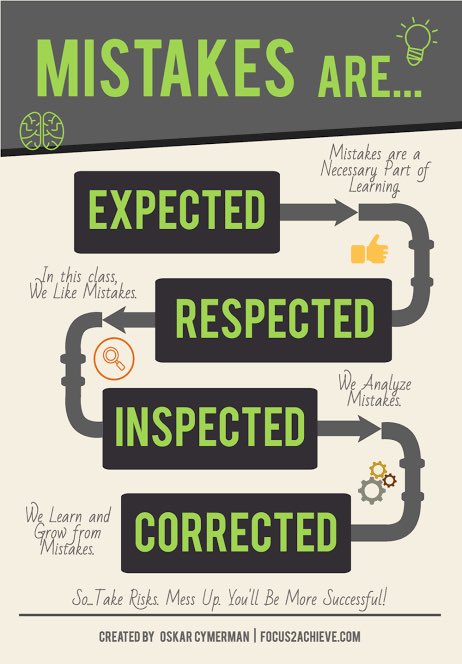 They were a 5 Star until owners changed and the owner wouldn't pay for degreed staff to meet the rating of a 5 star center. Now they are worse then ever and not a good place for young children. Owner is not knowledgeable about childcare and fails to follow laws and contracts completely. He is in it for free money. Sudesh Agrawal remove my pics from your website, and any advertising entity, your permission is revoked. I want no part of your corrupt organization! You have been informed. Legal action will follow if you fail to remove my pictures from 10 yrs ago and my 5 star rating I achieved and expired in 2017! Use current rating only as it is fraud to lie to the public to gain enrollment by falsely advertised SUTQ RATINGS! YOU LOST YOUR RATINGS AND ARE ONLY A 3!!!! OWN YOUR MISTAKES AND YOUR ADMIN MISTAKES.
They were a 5 Star until owners changed and the owner wouldn't pay for degreed staff to meet the rating of a 5 star center. Now they are worse then ever and not a good place for young children. Owner is not knowledgeable about childcare and fails to follow laws and contracts completely. He is in it for free money. Sudesh Agrawal remove my pics from your website, and any advertising entity, your permission is revoked. I want no part of your corrupt organization! You have been informed. Legal action will follow if you fail to remove my pictures from 10 yrs ago and my 5 star rating I achieved and expired in 2017! Use current rating only as it is fraud to lie to the public to gain enrollment by falsely advertised SUTQ RATINGS! YOU LOST YOUR RATINGS AND ARE ONLY A 3!!!! OWN YOUR MISTAKES AND YOUR ADMIN MISTAKES.
We appreciate you contributing to Care.com. If you'd like to become a member, it's fast, easy — and free!
Join now
No thanks, not right now
No thanks, not right now Join now
Little Learners Child Development Center, Ltd.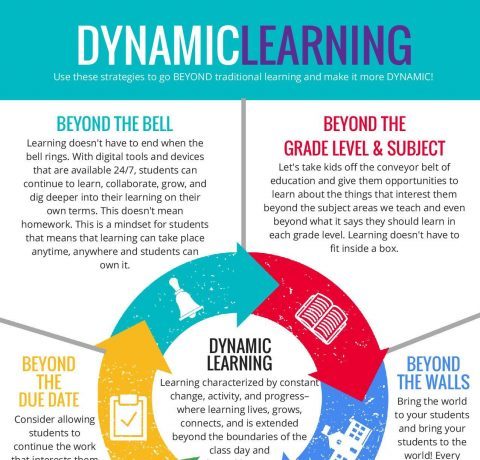
3550 13th St Nw , Canton, OH 44708
All About Kids Daycare of North Canton Inc
6199 Frank Ave Nw , North Canton, OH 44720
Time To Play Drop In Child Care
5553 Whipple Ave NW Suite 1 , North Canton, OH 44720
Holy Cross Preschool & Kindergarten
7707 Market Ave. N. , Canton, OH 44721
Golden Key Center For Exceptional Children
1431 30th St Nw , Canton, OH 44709
Discounts for siblings.
By clicking "Submit," I agree to the Care.com Terms of Use and Privacy Policy and allow Care.com to share this information with all similar local businesses.
Care.com only verifies the license of a business. Any other information, including awards and accreditation, hours, and cost, were provided by this business and may not reflect its current status. We strongly encourage you to verify the license, qualifications, and credentials of any care providers on your own. Care.com does not endorse or recommend any particular business.
Care.com does not endorse or recommend any particular business.
The Care.com Safety Center has many resources and tools to assist you in verifying and evaluating potential care providers.
{{#data.ctaLocations}}
{{name}}
{{city}} {{state}}, {{zipCode}}
{{#compare rating '0.0' operator="==" }} {{/compare}} {{#compare rating '0.5' operator="==" }} {{/compare}} {{#compare rating '1.0' operator="==" }} {{/compare}} {{#compare rating '1.5' operator="==" }} {{/compare}} {{#compare rating '2.0' operator="==" }} {{/compare}} {{#compare rating '2.5' operator="==" }} {{/compare}} {{#compare rating '3.0' operator="==" }} {{/compare}} {{#compare rating '3.5' operator="==" }} {{/compare}} {{#compare rating '4. 0' operator="==" }} {{/compare}} {{#compare rating '4.5' operator="==" }} {{/compare}} {{#compare rating '5.0' operator="==" }} {{/compare}} ({{totalReviews}})
0' operator="==" }} {{/compare}} {{#compare rating '4.5' operator="==" }} {{/compare}} {{#compare rating '5.0' operator="==" }} {{/compare}} ({{totalReviews}})
{{/data.ctaLocations}}
No thanks, not right now
No thanks, not right now
Search now
No thanks, not right now
No thanks, not right now Search Now
Child Care / Preschools / Preschools in Canton, OH / A Place to Learn and Grow
Join free today
Sign up now! It only takes a few minutes.
Let's go
I'd like to...
Find care Apply to care jobs
Who needs care?
My kids My parents My pets My household
What type of ?
Babysitter Nanny Daycare center Special needs Tutoring and lessons Date night After school I'm not exactly sure
Pet sitter Dog walker Pet day care Boarding/kenneling Groomer Veterinarian
Housekeeper Cleaning agency House sitter Personal assistant
In-home care Transportation Errands Retirement facility Dementia care Companion care
When do you need ?
Right now Within a week Within a month or two Just browsing
What services do you offer?
Babysitting and nannying Special needs care Tutoring or private lessons Center-based child care Senior care Housekeeping In-home child care Pet care Errands and house sitting
What best describes you?
Individual Small business
Last, but not least. ..
..
Fill in the blanks to create your account.
Thanks—you're almost there.
Create your login below.
First Name
Last Name
Address
City, State and ZIP
Password
I am a BabysitterNannyChild Care CenterFamily Child Care (In-Home Daycare)Special Needs ProviderTutorPrivate Lesson InstructorSenior Care ProviderNursePet Care ProviderHousekeeperErrands & Odd Jobs Provider
How did you hear about us? Friends or FamilyPress Coverage (News, Magazine, Blog)Commercial NoStreaming Video Ad (Hulu, Roku)Parenting Group or ForumYouTubeRadio/Audio Ad (iHeart, Pandora, Podcast)Search Engine (Google, Bing)Cable TV AdCommercial YesOther Social Media (Twitter, Pinterest, LinkedIn, TikTok)InfluencerBillboardFacebook or InstagramBanner AdOther
By clicking "Join now", you agree to our
Terms of Use and Privacy Policy.
Password
ZIP Code
By clicking "Join now", you agree to our
Terms of Use and Privacy Policy.
First name
Last name
Address
City, State and ZIP
How did you hear about us? Friends or FamilyPress Coverage (News, Magazine, Blog)Commercial NoStreaming Video Ad (Hulu, Roku)Parenting Group or ForumYouTubeRadio/Audio Ad (iHeart, Pandora, Podcast)Search Engine (Google, Bing)Cable TV AdCommercial YesOther Social Media (Twitter, Pinterest, LinkedIn, TikTok)InfluencerBillboardFacebook or InstagramBanner AdOther
By clicking "Join now", you agree to our
Terms of Use and Privacy Policy.
A Place to Grow and Learn
Contents
A Place to Grow and Learn
- Introduction
- Why a citywide approach?
- Getting started with citywide OST improvement: Six action elements
- Sustaining the system, achieving the benefits
- Building a sustainable OST system: Still a lot to learn
- Endnotes
- Related Wallace products
Click here to download the full report:
A Place to Grow and Learn
Since 2003, The Wallace Foundation has supported a range of initiatives in five cities to develop and test new, coordinated approaches to making high-quality out-of-school time learning opportunities available to more children. While much remains to be learned, we believe a coordinated approach holds considerable promise for building and sustaining improvements in OST opportunities on a wide scale. In this paper, we describe the basis for our working hypothesis for expanding the quality and reach of out-of-school time learning opportunities. And we identify six “action elements” that can help other cities get started with a coordinated approach to OST improvement.
While much remains to be learned, we believe a coordinated approach holds considerable promise for building and sustaining improvements in OST opportunities on a wide scale. In this paper, we describe the basis for our working hypothesis for expanding the quality and reach of out-of-school time learning opportunities. And we identify six “action elements” that can help other cities get started with a coordinated approach to OST improvement.
Introduction
Every year, some 40 million American children and teenagers occupy their non-school hours with supervised activities that can reap them lifelong benefits - from perfecting a curve ball to memorizing a Shakespearean soliloquy or mastering multiplication tables.i The idea that learning and enrichment cannot and should not end with the school bell is hardly new. Organizations such as Boys and Girls Clubs date back some 150 years,iiand the out-of-school time learning movement grew rapidly in the early part of the 20th century with the Progressive Era, when settlement houses and children's clubs offered young people, often the offspring of immigrants, a place to learn language and culture and explore a variety of endeavors. iii
iii
In recent years, after-school programs have attracted a new burst of interest and funding. More than 500 municipal leaders surveyed by the National League of Cities ranked after-school programs among the most pressing needs for children in their communities.iv More households have working mothers, with the resulting need for a safe, wholesome place for children after school,v and families are increasingly looking to after-school providers for academic help or to compensate for cutbacks in arts, sports or other enrichment activities at public schools.
To David Cicilline, mayor of Providence, RI and a leading national advocate for better out-of-school time (OST) programming, the benefits are clear.“There’s no greater gift than that kids have a safe, enriching, high-quality place to grow and learn all day,” he says. “I mean, there’s nothing better that you can do.”vi
Despite such enthusiastic endorsements, many questions remain about these programs: their costs, how to boost participation, the actual benefits for children, and what “quality programming” looks like. But their potential rewards are now widely seen as promising enough that OST has attracted significant new funding in recent years. The federal government is spending about $3.6 billion annually for out-of-school time learning, chiefly through the 21st Century Community Learning Centers program and the Child Care and Development Fund. California has spent hundreds of millions of new dollars on OST as a result of the passage by voters of Proposition 49 in 2002. In New York City, Mayor Michael Bloomberg has overseen an increase in public out-of-school time programming funding from $47 million in fiscal 2006 to $109 million in fiscal 2008.
But their potential rewards are now widely seen as promising enough that OST has attracted significant new funding in recent years. The federal government is spending about $3.6 billion annually for out-of-school time learning, chiefly through the 21st Century Community Learning Centers program and the Child Care and Development Fund. California has spent hundreds of millions of new dollars on OST as a result of the passage by voters of Proposition 49 in 2002. In New York City, Mayor Michael Bloomberg has overseen an increase in public out-of-school time programming funding from $47 million in fiscal 2006 to $109 million in fiscal 2008.
But with additional funding and attention has come the challenge of lifting the quality of these programs and expanding their availability. The fact is that as many as 20 million young people in the United States todayvii are not participating. For many of them, the time after school, on weekends and over vacations signals boredom and risk. Children in lower-income families in particular are far less likely than their more affluent peers to have access to, or participate in, out-of-school offerings.viii That means they miss out on activities that may cultivate talent, lift self-confidence, improve social skills, increase engagement with school, and decrease the likelihood of risky or self-destructive behavior.
Children in lower-income families in particular are far less likely than their more affluent peers to have access to, or participate in, out-of-school offerings.viii That means they miss out on activities that may cultivate talent, lift self-confidence, improve social skills, increase engagement with school, and decrease the likelihood of risky or self-destructive behavior.
Since 1990, The Wallace Foundation has supported a range of initiatives to help change that picture. Past efforts most often centered on expanding and enhancing out-of-school time opportunities in specific venues such as urban parks, libraries, museums, arts organizations and schools.ix Anxious to extend the reach and impact of this work, we adopted in 2003 what was then, and remains, a novel approach to creating better OST opportunities for more children. We selected five cities – New York City and Providence first; Boston, Chicago and Washington, D.C. a couple of years later – to develop and test a citywide approach that brought to the table top leaders from government, schools and the OST provider community to plan well-coordinated ways of providing high-quality OST to more young people, especially those with the highest needs.
The Five Cities in Wallace’s Out-of-School Time Initiative
|
The five cities were selected by Wallace for reasons that included their previous track record in OST, the relative variety and strength of their OST providers, and their leaders’ demonstrated commitment to enhancing opportunities on a wide scale. These cities have begun to yield lessons we believe could guide other cities interested in getting started in expanding the quality and reach of their OST opportunities. The purpose of this Wallace Perspective is to discuss the basis for this citywide approach and to describe six interrelated “action elements” that we believe are central to its success and sustainability.
The purpose of this Wallace Perspective is to discuss the basis for this citywide approach and to describe six interrelated “action elements” that we believe are central to its success and sustainability.
The six action elements are as follows:
- Committed leadership – including top political, school, community and OST leaders, to secure funding and other resources and shape policies;
- A public or private coordinating entity – to manage the development of plans, link disparate OST players, build citywide attention and support for OST, and ensure that plans and performance stay on track;
- Multi-year planning – to set goals and priorities, develop ways to hold key players accountable for results and identify necessary resources;
- Reliable information – to document the needs and wishes of parents and children, track participation and identify underserved neighborhoods and families;
- Expanding participation – to reach more children and ensure that they attend often enough to benefit; and
-
A commitment to quality – because quality programs are likeliest to benefit children and therefore scarce OST funding should be directed to delivering high-quality programming.
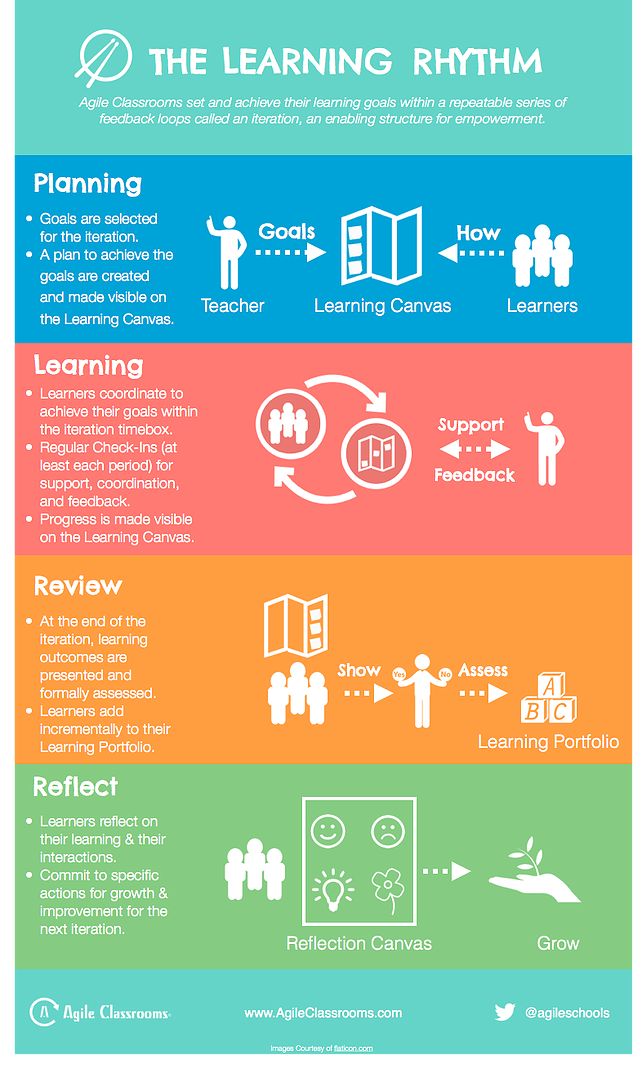
These action elements make up the building blocks of our working hypothesis for improving OST opportunities for many more children. That hypothesis is as follows:
- Children and youth can gain learning and developmental benefits by frequent participation in high-quality programs; and
- The best route to providing such high-quality services to more children is to adopt a citywide, coordinated approach that is sustainable.
< < Previous | Next > >
The system of growth, training, certification and motivation of personnel - CMS Magazine
Following the production and business topics, I will raise questions about personnel and work with them. In the production of typical low-cost websites, the issue of personnel is one of the key tasks. We need people who are result-oriented, able to act quickly, make decisions, stress-resistant, attentive to details.. . and with adequate salary requests. That's right, you can't find such people! They need to be taught and trained. Let's talk about HR.
. and with adequate salary requests. That's right, you can't find such people! They need to be taught and trained. Let's talk about HR.
No more searching and calling every digital agency
Create a contest on workspace.ru - get offers from CMS Magazine participants for price and terms. It's free and takes 5 minutes. There are 15,617 digital agencies in the catalog ready to help you - choose and save up to 30%.
Create a competition →
Do you need an HR specialist?
At some point, when there were a lot of us, I stopped checking mail in the morning, and here's why. Not a week went by that I didn't find my employees' resumes on job search sites. Do you know how it hurts? The day is ruined, I don’t feel like working, but there were so many plans... One of the decisions that we made in a timely manner was hiring an HR specialist. Our business is people. This means that their selection, replacement, training must be done professionally and constantly. Including checking the newsletter from the headhunter. And it certainly should not be the owner or director of the business. Otherwise, I advise you to buy hair dye and sleeping pills.
Including checking the newsletter from the headhunter. And it certainly should not be the owner or director of the business. Otherwise, I advise you to buy hair dye and sleeping pills.
In addition, you understand: if you hire the wrong person or someone suddenly quits, and there is no replacement because no one thought about it in advance ... - the company carries high risks and is very unstable. All these tasks can and should be completed by HR, not by the director. Let's now look at what HR should do in an agency.
Search for employees. Recruitment is the main task of the HR unit. All HR people like to say that there are no people in the market. But we need to ask them a question: who are we competing with in the labor market? Is there a list of competing companies in the field of personnel and employees who work for them? Is there a list of enterprises in another industry where our potential employees may be located? When was the last time we logged into LinkedIn? Most of these questions remain unanswered. If not, then you're in luck.
If not, then you're in luck.
I can start asking more questions. What does our company look like on the outside for candidates? How is the page on hh.ru designed? Is it interesting to read the job description? Do we send a welcome presentation to candidates or a video? If this is not the case, then we will take just anyone. And the wrong person can slow down development for a long time.
Make a set of "tasty" materials for applicants. Sell your jobs to them the way you sell your products. Lead applicants through the funnel (I'm serious), giving them material in portions, sparking interest in your work. And then there will definitely be fewer problems with the search. The link in the margin is an example of a video about the company for candidates, which we send to them after the initial interview.
Video about WebCanape
We also packed the entire selection of personnel into one regulation, which we use constantly.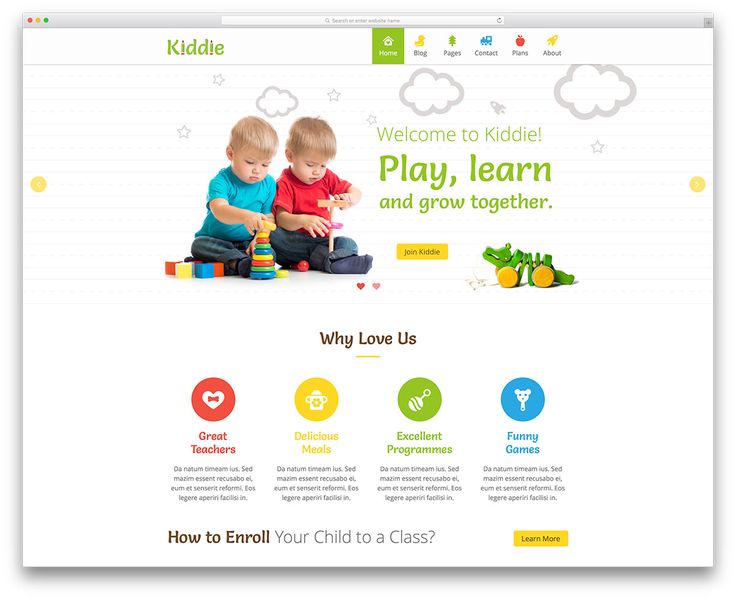 For those who send us an interesting idea to [email protected] on where to look for personnel for digital agencies, we will send the regulations for the process of recruiting, moving and releasing WebCanape staff.
For those who send us an interesting idea to [email protected] on where to look for personnel for digital agencies, we will send the regulations for the process of recruiting, moving and releasing WebCanape staff.
In the online course "Digital agency on the assembly line" we will form a set of regulations for HR.
Adaptation of new employees. Training in large companies has always been the place to be. But while the average life cycle of an employee in the company was quite long, no serious attention was paid to building a training system. Now, when for a new generation of workers, a period of one or two years in the company seems to be normal, the task of quickly learning and induction is coming to the fore. We need to train a specialist as quickly as possible so that he can start bringing money to the company. Especially when we are talking about business on the assembly line.
From the moment a new employee enters the office, a three-month adaptation plan is activated for him. Onboarding is a key process in quickly and efficiently integrating a new employee into the workflow.
Onboarding is a key process in quickly and efficiently integrating a new employee into the workflow.
We came to the conclusion that we began to distinguish between primary and secondary adaptation of the beginner. As part of the initial adaptation, there is a detailed acquaintance with the team and a detailed acquaintance with new responsibilities; assimilation of collective stereotypes of behavior predetermined by corporate culture; assimilation - complete adaptation to the environment - and, finally, identification - identification of personal interests and goals with common ones. Secondary adaptation has its own characteristics associated with a change in the familiar environment and work tasks.
The purposes of adaptation are:
-
speeding up the process of entering a new employee into a position;
-
formation of a feeling of job satisfaction in a new employee, reduction of naturally occurring anxiety and uncertainty;
-
reduction in staff turnover.

Usually, already on the first day, an employee is given access to a corporate training system, where he or she watches an "About" video. This is not a standard video from the site. This is a kind of adaptation video course for getting to know the leaders and values of the company. It is not expensive to make such a format, but it looks very solid, and, most importantly, the new employee receives first-hand information about the company. Ideally, if it is an informal video. You can arrange it as a communication between managers and a new employee or show the values, culture, and traditions of the company in a non-standard way. A simplified alternative to such a video course could be the Beginner's Book. With its help, the employee gets acquainted with corporate rules, and also finds in it answers to questions that are of particular concern to him at first.
Beginner's Book
Everything that an employee has to do on the first day is sent to him in a welcome letter with a list of contact persons. Get a key, accesses and passwords from the system administrator, sign an agreement on non-disclosure of trade secrets from the personnel officer, take a tour of the office with a mentor, etc.
Get a key, accesses and passwords from the system administrator, sign an agreement on non-disclosure of trade secrets from the personnel officer, take a tour of the office with a mentor, etc.
The most interesting tours around the office are in the form of a quest. The beginner receives a paper letter with an itinerary. Performing simple tasks, he moves through all departments of the company - the virtual stages of website development. Meets colleagues and collects valuable information. For example, he needs to answer questions about information security. For each successful task, a piece of the puzzle with an encrypted message is issued. At the end of the quest, there is a clue. So through the game we relieve tension and involve newcomers in the life of the company. At the beginning of the quest, we ask new employees to answer a few questions about their goals and expectations from the new job. We will definitely return to these records at the end of the trial period and after six months.
The quest is especially cool if the team is replenished with two or three new employees on the same day.
Yulia Marchenkova, HR Director
After all familiarization activities, the stage of induction begins. A newcomer receives a plan for entering the position from his immediate supervisor. It contains a written program for the development of an employee during his onboarding process (including the main tasks that he must complete, as well as a list of key skills that he must master).
It may seem that all this is very complicated. This is really difficult until you fix everything in the form of a checklist and appoint a responsible HR who will help monitor its implementation. Such an adaptation process is faster and easier, and employee immersion in work is more effective. But more importantly, in the process of developing an adaptation program, you will capture all the accumulated knowledge of the best specialists and make their transfer independent of specific people.
Certification of employees for knowledge of the company's products. One of the important steps in working with personnel is the certification of the managerial staff (everyone who works with clients) for knowledge of all the products that we develop and, accordingly, implement to clients. A manager can only be allowed to communicate with clients if he knows the product he offers perfectly (in our case, this is a website, advertising and promotion). He knows the product, which means he understands how it works in detail, knows how to set it up and explain its mechanics to the client.
Attestation takes place twice a year, like a regular exam. Two theoretical questions and one practical. Ticket texts are always available in general corporate access. Take it and get ready. If you don't pass the exam, you fall down a step. If you don’t pass a second time, the question of professional suitability and the need for further cooperation is raised.
Exam in WebCanape
Exam results
Gradation of employees, or Seven Belts WebCanape
“The gradation of people is a thankless task. Each person needs to be approached individually, ”I often hear such comments when I talk about our employee growth system. It's all like that. Everyone needs an individual approach, but only after the system of gradation and growth is built and implemented. What I'm talking about?
Each person needs to be approached individually, ”I often hear such comments when I talk about our employee growth system. It's all like that. Everyone needs an individual approach, but only after the system of gradation and growth is built and implemented. What I'm talking about?
The growth matrix is a coordinate system that indicates what salary an employee will receive, when and under what conditions. In other words, this is a system that shows the employee what step he is on and what needs to be done to move to the next one. I recommend implementing this system if there are more than 10 developers plus line managers.
Growth matrix in WebCanape
If a "green" employee comes, everything is simple. He starts from the first step and then achieves results, moves higher and higher. His qualifications are growing, his salary is growing, and bonuses are appearing.
In training, we start from the practical tasks of the employee, which allows us to interest him and, accordingly, accelerate his growth.
Having a transparent employee growth scheme, we motivate him, and the company in a short time gets a strong team capable of solving complex problems.
Alexey Sokolov, lead developer of
If you hire an experienced employee, then he starts at an intermediate stage so that his salary expectations correspond to our matrix, but further growth is possible (in most cases) when the indicators of the previous stages are achieved. Table 12 shows an example of grading project managers.
Project Manager Growth Matrix
Salary consists of a salary, bonuses and additional bonuses: an increase for seniority, an increase for leading a group, a "star". With the first components, I think everything is clear, but I will explain about the "star". "Star" is expressed in a certain amount of money that the company gives out every month for an interesting solution to work problems. This is a kind of mark for outstanding achievements and an opportunity to show what exactly we value in our work.
"Star" - universal recognition and a special event in the life of an employee. The most striking example, for which I received a "star", is a taxi order form with integration into the order system. I had an API and a standard form builder. I immediately realized that the order must be convenient, otherwise all this will not work. In general, "made UX" where it should not have been. In addition, the result looked much better than the out-of-the-box forms. This gave impetus to refine the appearance of such forms. An example, of course, from the past, when we did not yet know about Scrum and Agile, with which we were not happy. "Star" is a special award to reward for something that cannot be measured by any KPI. New solutions and approaches, rational proposals, hitting the target audience with the design, contribution to the corporate culture, etc. If all this is announced, but not encouraged in any way, then disappointment in the company will come very soon.
Alexey Momot, lead developer of
I want to note the importance and draw your attention to the significance of the assessment for both the employee and the manager.
Why is this important for a leader? The manager has a great desire to create a successful company. Employees have a great desire to earn a lot and grow professionally. The growth matrix should combine a set of conditions, fulfilling which employees will reach their goal, thereby leading to the goal and the company. First of all, this matrix contains the vector of the company's movement, its growth system, without which it is impossible to manage it. Secondly, it contains transparency, which becomes important in everything with the growth of the team. This relieves the manager of the need to remember agreements with everyone, protects him from the ability to manage at the level of emotions (good mood - get a promotion), etc. It is also important that the growth matrix is a step-by-step plan for compiling a training program for employees. For almost every step, we have a set of training materials.
Why is this important to the employee? First of all, the employee sees what he can count on and what responsibility lies with him. It is important. The employee also sees what he needs to do to move on. Many of our managers from the advertising and promotion department prepare in advance and pass exams for certification by Yandex. For them, this is an opportunity to quickly move to a new level, and for the company - the growth of the team's qualifications.
It is important. The employee also sees what he needs to do to move on. Many of our managers from the advertising and promotion department prepare in advance and pass exams for certification by Yandex. For them, this is an opportunity to quickly move to a new level, and for the company - the growth of the team's qualifications.
System of motivation or financial incentives for employees
This question is very subtle. I recommend not copying our experience, take a close look at your team, goals and the stage you are at, and only after that implement or change the motivation system. As I already said, WebCanape has a system of performance indicators. These indicators allow you to control the work of the company (at the level of numbers). The motivation system allows you to influence them with a certain probability.
Next, we will talk about the calculation of the premium. I want to note that the award is a reward for excellent results. An employee receives a salary for a good result, and a salary plus a bonus for an excellent result. Many consider the award to be something natural, taken for granted. It should not be.
Many consider the award to be something natural, taken for granted. It should not be.
Bonus for site development managers. You can determine the size of the bonus fund for managers yourself. For example, as a percentage of profit or turnover. Between managers, this potential bonus (fund) is distributed in the same percentage as their contribution to the common pool. Ivanov brought 70% of the income, Petrov - 30% of the income. This means that the bonus fund will be divided in the same ratio. Each manager must turn in projects for X money per month. This is a condition for receiving the award. If he passed, then he is entitled to a bonus, if not, only a salary. Further, reduction factors are included if performance indicators are violated. The average coefficients for all projects for the month are taken and multiplied. The formula is simple:
Actual premium = Planned premium x Standards ? Deadlines x Reviews.
Guidelines: 100% complete = 1; 90% complete = 0.
9, etc.
Timing: 100% complete = 1; 90% complete = 0.9, etc.
Reviews: 4–5 points — 1; 3 points - 0.8; 1-2 points - 0 (zero).
For a manager to receive 100% of his bonus, all factors must be equal to 1.
This is a simplified version of the system used in WebCanape. It can be balanced in one direction or another by entering coefficients or new indicators that you want to draw the attention of managers to. The motivation system for line managers should be changed once every six months, because with a longer period, the brain begins to think not how to achieve indicators, but how to deceive the system.
In the online course "Digital agency on the assembly line" we analyze in detail examples of the motivation system and how it can change depending on the situation.
I will give a simple example of how, by changing KPI, you can achieve goals. We have never spent money on advertising our services. But with the increase in the cost of projects (once a year we increase prices), there were not enough new orders in production.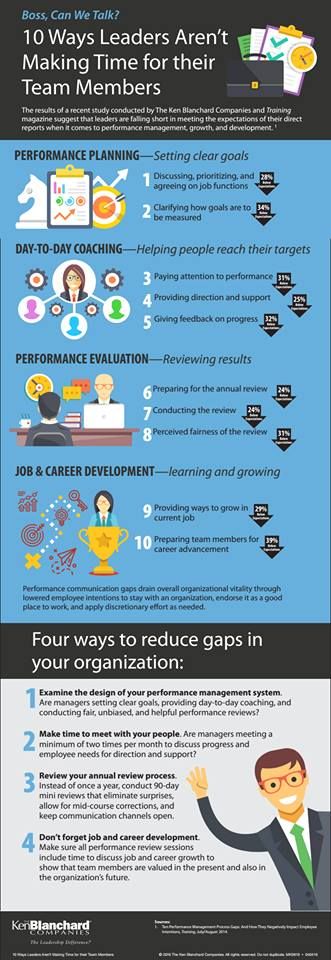 At the same time, the team of project managers was decently updated. Advertising channels did not give such conversion as word of mouth. Yes, and constantly spending money on advertising was not part of our plans. We turned to the motivation system. We decided to adjust the formula for motivating managers. In the next six months, a good customer review through the site will give the manager a double coefficient that affects the size of the bonus. Three months later, word of mouth started working again :) The fact is that in order to get feedback, you need to not only communicate well, but also meet deadlines and do everything on projects in advance. And this has a strong impact on all business indicators. Beginners entered a normal rhythm, the formula was returned to its original state, slightly adjusted in the direction of increasing profitability.
At the same time, the team of project managers was decently updated. Advertising channels did not give such conversion as word of mouth. Yes, and constantly spending money on advertising was not part of our plans. We turned to the motivation system. We decided to adjust the formula for motivating managers. In the next six months, a good customer review through the site will give the manager a double coefficient that affects the size of the bonus. Three months later, word of mouth started working again :) The fact is that in order to get feedback, you need to not only communicate well, but also meet deadlines and do everything on projects in advance. And this has a strong impact on all business indicators. Beginners entered a normal rhythm, the formula was returned to its original state, slightly adjusted in the direction of increasing profitability.
I showed the organization of the financial motivation system using the example of development managers. A similar system can be introduced in other departments. To introduce or not to introduce a system of rewards for developers is a big question. It all depends on what goal you are pursuing. In WebCanape, a small bonus is allocated to developers, which is distributed by the team leaders at their discretion. This is a certain managerial lever for them when working with a team.
To introduce or not to introduce a system of rewards for developers is a big question. It all depends on what goal you are pursuing. In WebCanape, a small bonus is allocated to developers, which is distributed by the team leaders at their discretion. This is a certain managerial lever for them when working with a team.
Remote or office?
The problem of finding personnel is simplified if you are ready to organize work with employees remotely. It doesn't matter where they are, the main thing is to be at the computer, solving the tasks. For many employees, this mode is quite comfortable. This scheme is less stable due to the lack of normal communications, but in conditions of shortage and high cost of personnel, one has to learn how to work this way.
We have made it a rule that everyone who communicates with a client works only from the office. These are project managers, account managers, support service. Specialists who work clearly on tasks can be located anywhere.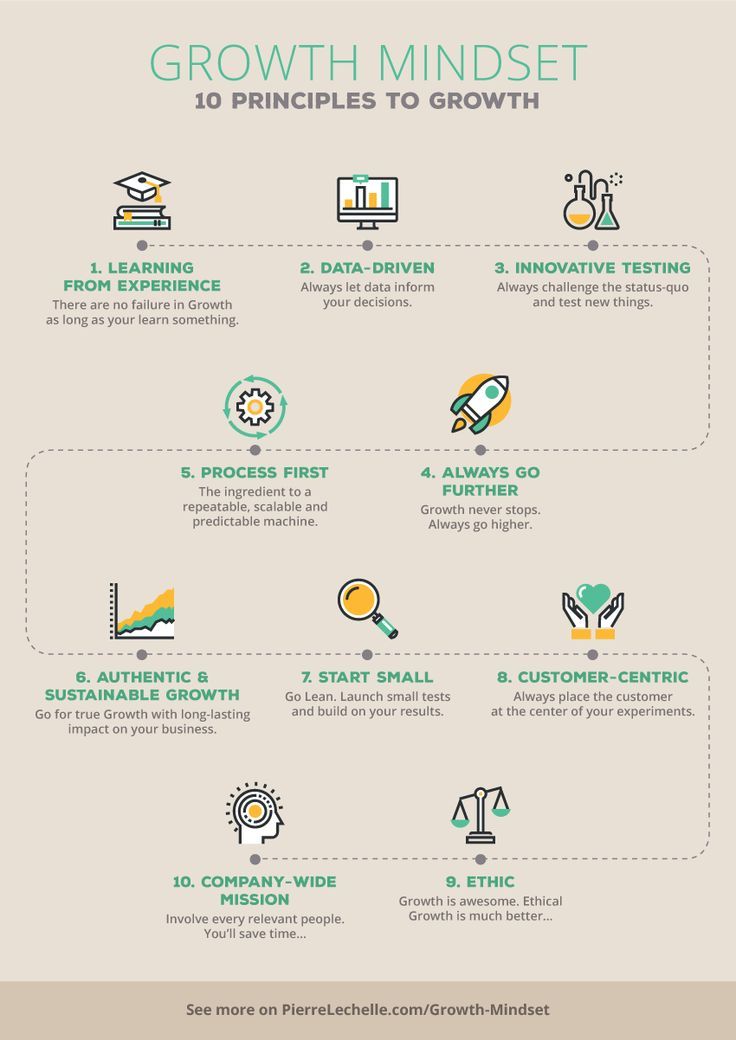 So far we have 90% of employees work in the office, but we are also changing. These are business requirements, and you have to learn how to work with it.
So far we have 90% of employees work in the office, but we are also changing. These are business requirements, and you have to learn how to work with it.
Useful links
-
Full version of the book "Business on the assembly line, or How to build a profitable agency in a crisis" on Ridero.
-
@webbizz is a Telegram group created to discuss the most pressing issues regarding agency management.
Previous book chapters
-
Why do you need a business plan when it does not come true?
-
A team that will become the foundation of a sustainable business
-
Now we sell products, not services
-
How to build a sales team that fulfills the plan?
-
Automation of the sales department, or One manager for 120 requests
-
Production on the assembly line - a guarantee of timing and quality
-
How to get cooler every day? Continuous improvement process
-
How to stop depending on the human factor in management
-
Last Mile, or Delivery of the finished product to the client
-
How much do unsuccessful projects cost the agency?
-
Studio performance indicators to be monitored
-
The support service must earn
-
Organization of the work of the promotion and advertising department
Staff training as a way to improve company results
Contents
Personnel training is one of the most important business processes in any modern company. Achieving success and strategic goals directly depends on well-trained specialists. In this article, we will look at the goals and methods of employee training.
Achieving success and strategic goals directly depends on well-trained specialists. In this article, we will look at the goals and methods of employee training.
Why staff should be trained
Staff training increases the efficiency of the company in all areas. Trained employees begin to work more efficiently, make fewer mistakes and quickly adapt to modern business requirements.
There is an opinion that it is better to hire new employees than to teach new knowledge to those who already work in the company. But this is a common organizational error. An employee who already has practical experience in a company is always better than a beginner. The organization of the process of training your own employees is not so expensive, and in the constantly changing market conditions, it is already necessary to train new ones.
Therefore, the best solution is to train your employees, and not to hire those who may seem more qualified because of the presence of a diploma. By training your employees, you will be completely sure what knowledge a person has received and how correctly he understood them.
By training your employees, you will be completely sure what knowledge a person has received and how correctly he understood them.
The main goals of personnel training
For business:
- Creation of a qualified efficient team
- Formation of a common information field
- Ability to control the situation and solve problems, quickly responding to market and technology changes
- Full integration of personnel into production / business processes
- Maintaining a given level of product or service quality
- Reducing operational errors
- Increase in sales, improve conversions and increase the profit of the company
- Optimization/reducing the cost of production
- Implementation of innovations
For an employee:
- Skills to do work not mechanically, but consciously
- Obtaining and improving one’s own qualifications beyond the current specialization
- Increasing knowledge of how the company works
- Increasing competence in the areas of planning and organizing their activities
- Coordination of actions with other members of the team
Is it possible to do without systematic staff training? Not in today's reality.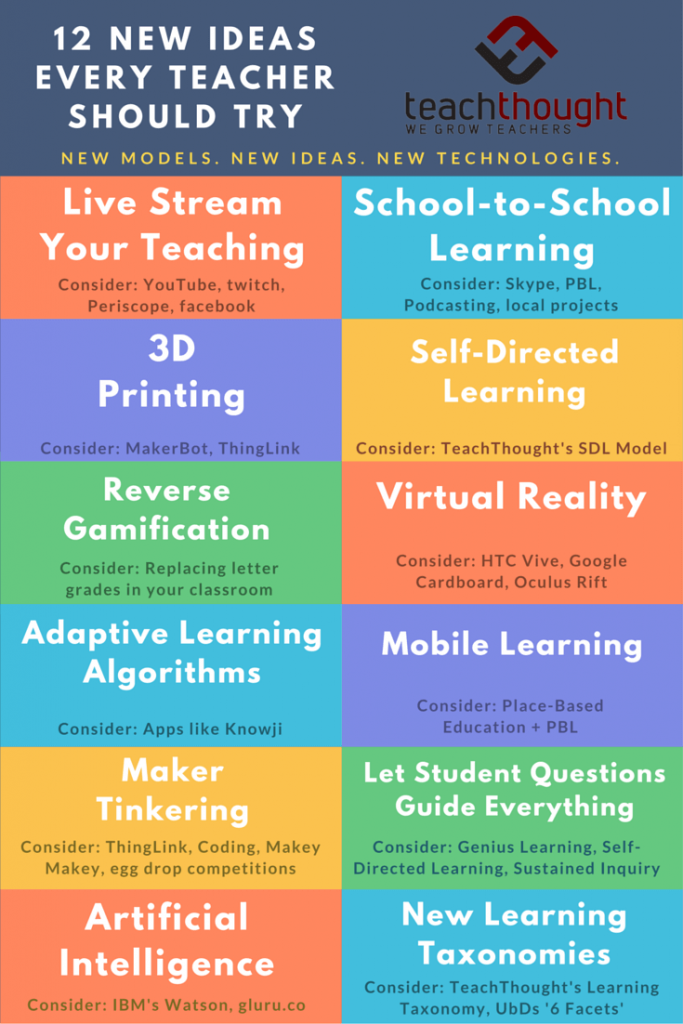 And today, this is primarily due to the constant development of technology and market changes. For the development and success of the company, an employee training system is simply necessary.
And today, this is primarily due to the constant development of technology and market changes. For the development and success of the company, an employee training system is simply necessary.
Proper organization of employee training ultimately guarantees economic benefits for the enterprise. And for employees, advanced training gives confidence in their competence, job retention and high professional status, which, again, has a positive effect on the development of the enterprise.
Case study: How employees are trained in the network of football schools Impulse →
The essence of training
Employee training in a company is an important business process, the essence of which is targeted and systematic training of qualified specialists. This system includes not only the transfer of knowledge and skills to employees, but also the regular testing of this knowledge.
Regular staff appraisal helps to understand how correctly an employee understands which company he works for, what is the purpose of this company, what product or service it produces, what problem and for whom it solves. It is very important that the employee clearly understands his job responsibilities, what result he should produce at the workplace, what contribution he makes to the overall result of the company. Knowledge control after training is a necessary attribute of any professional training.
It is very important that the employee clearly understands his job responsibilities, what result he should produce at the workplace, what contribution he makes to the overall result of the company. Knowledge control after training is a necessary attribute of any professional training.
The training of employees in a modern company must be continuous. This is due to:
- The development of new technologies and the acceleration of their implementation in real business
- High competition in the market, in which those who know and can win more
- The continuous need to receive high returns from staff and increase work efficiency
Applying skills and knowledge acquired during the training process, each employee improves his performance, which together increases the competitiveness of the entire company. After training employees, each of them becomes more involved in the technological process, that is, they work consciously, with an understanding of their role and contribution to the common cause.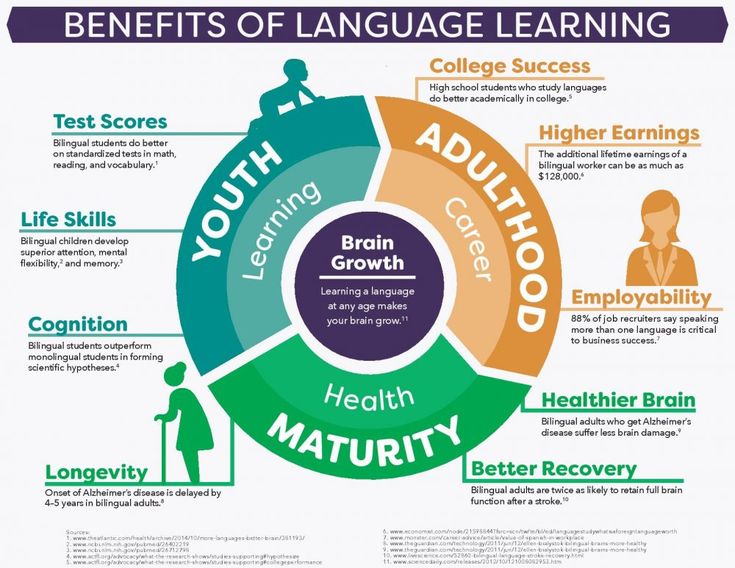
Forms of staff training
According to the venue, they are distinguished:
- internal
- external
Internal training of employees in the company involves the passage of programs compiled by the organization itself. External training is provided by other companies and takes place outside the firm.
By format:
- online or remote
- offline or face-to-face (traditional)
Remote forms may include the same methods as traditional ones. The difference is in the format of obtaining knowledge. In the traditional form, training takes place face-to-face in classrooms, and in remote form using various gadgets (laptop, tablet, smartphone).
Types of employee training
External training centers that issue state certificates traditionally distinguish between several types of training. These are:
Initial training
Initial training of specialists in a particular field who have all the necessary knowledge and skills to carry out their professional activities.
Professional development
Training to improve knowledge and skills, in connection with a change of position or for those wishing to improve their professional skills. More →
Retraining
Acquisition of new skills and knowledge for additional professional education. Retraining is designed for those who already have a higher or secondary vocational education.
Internal training in a company, as a rule, begins with initial adaptation at the workplace and immersion in the general context of the business. After that, there is a consistent introduction directly to the position held, full knowledge about the company's products and services is transferred, and the skills necessary for work are trained. This includes technical training for staff.
10 methods and formats of training
In what format the employee will be trained (on the job or off work) also depends on the chosen training methods.
On-the-job training is carried out on the job: the employee is provided with up-to-date work tools with which he will interact after completing the training.
Off-the-job training for company employees takes place outside the work environment. An employee receives knowledge not at the workplace, but in a special educational institution or center, usually using simplified equipment and tools.
Today there are many effective methods of personnel training. The specific choice depends on the goals and objectives of training. Consider the most popular methods.
1 - Self-learning
Worker learns independently at a time and place that is convenient. This method will require high self-discipline from the employee.
2 — Lectures
The advantage of this technique is the ability to convey a significant amount of information immediately to a large audience. The downside is the lack of individual feedback in training for each participant.
3 — Seminars
Unlike lectures, participants have the opportunity to ask questions and receive answers. The downside is the limited number of participants.
4 - Video tutorials and webinars
This employee training tool has replaced the traditional lectures and is gaining more and more popularity. The availability of obtaining knowledge at any time and in any place has become a key advantage of the new time.
5 — Business games
Training of company employees in the form of a game. This method allows you to simulate the behavior of employees in various production situations, as well as teach how to work in a team. With its help, you can transfer the necessary skills to employees. This technique is especially useful for practicing communication skills within a team.
6 - Training
This is a regular learning approach in the form of hands-on exercises to help participants become better problem solvers. It is good in cases where it is necessary to practice the necessary skills. The disadvantages are that the employee is taken away from work, usually for an extended period of time.
7 - Temporary rotation
A training method involving the exchange of work activities between employees. Effective for expanding the point of view within the company. Allows the employee to look at solving problems from a different perspective. For example, look at the result of your work through the eyes of the employee who directly receives this result.
8 - Mentoring
Involves the appointment of a mentor for a student. This allows you to quickly give feedback and correct incorrect actions of the employee in real time and teach new knowledge. The downside is that the mentor at this moment stops doing his main job.
Read about how mentoring is organized in the LifeMart network.
9 - Business coaching
This is a means of training staff with the help of outside experts who specialize in a specific narrow topic. This may be some professional area, for example, sales, or the area of employee motivation and involvement in the work process.
10 — Distance learning
The most modern way of obtaining concentrated information on a necessary topic, which is actively developing today and gradually absorbing all of the above formats.
Identifying employee training needs
To answer this question from a company's point of view, it is first necessary to know its current goals. What interests business owners in the near future and in the long term? You can decompose each such goal into specific and measurable indicators. And then understand how the behavior of employees must change in order for the company to achieve these goals. The delta between the current and future behavior of employees should be described in terms of specific knowledge and skills, which will form the basis of the company's current need for employee training.
The need for staff training is also very important. The main types of motivation for them can be divided into internal and external. Internal is professional growth and an increase in the ability to cope with increasingly complex production tasks. The external ones include career growth, higher wages and increased stability. If at least one of these prospects is visible, the employee will show interest in learning and he will not have to be forced to learn by force.
The external ones include career growth, higher wages and increased stability. If at least one of these prospects is visible, the employee will show interest in learning and he will not have to be forced to learn by force.
How to measure the effectiveness of employee training
The most objective indicator that allows you to analyze the training system is the results of the company's activities after staff training. They can be evaluated according to several criteria:
- Growth in revenue or profit
- Exploration of new market segments
- Increase in sales conversion
- Improving the quality of products
- Minimizing defects and reducing the number of errors
- Positive customer feedback
In addition to the valuable end result of training for the company, there are also intermediate indicators by which the effectiveness of staff training can be assessed. These primarily include:
- Engagement assessment by measuring the number of employees trained
- Checking staff knowledge based on the number of employees who have successfully passed certification
- Controlling application through the number of employees who actually use new knowledge and skills in their work
By learning how to measure the effectiveness of employee training, you will be able to assess how close you are to your main goal - increasing business results.

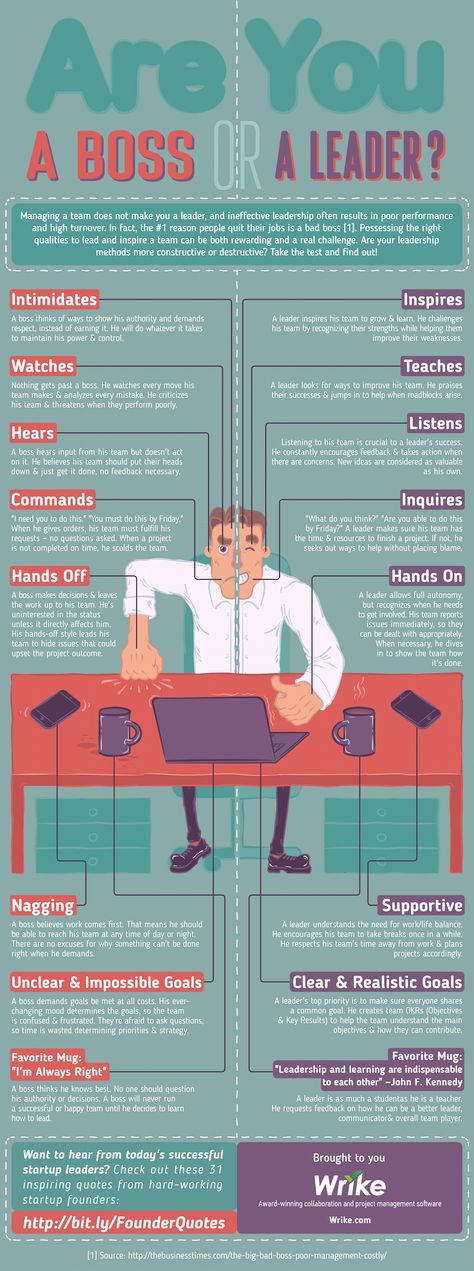 com, we realize that cost of care is a big consideration for families. That's why we are offering an estimate which is based on an average of known rates charged by similar businesses in the area. For actual rates, contact the business directly.
com, we realize that cost of care is a big consideration for families. That's why we are offering an estimate which is based on an average of known rates charged by similar businesses in the area. For actual rates, contact the business directly. http://www.nyc.gov/html/dycd/html/afterschool/out_of_school_time.shtml
http://www.nyc.gov/html/dycd/html/afterschool/out_of_school_time.shtml









